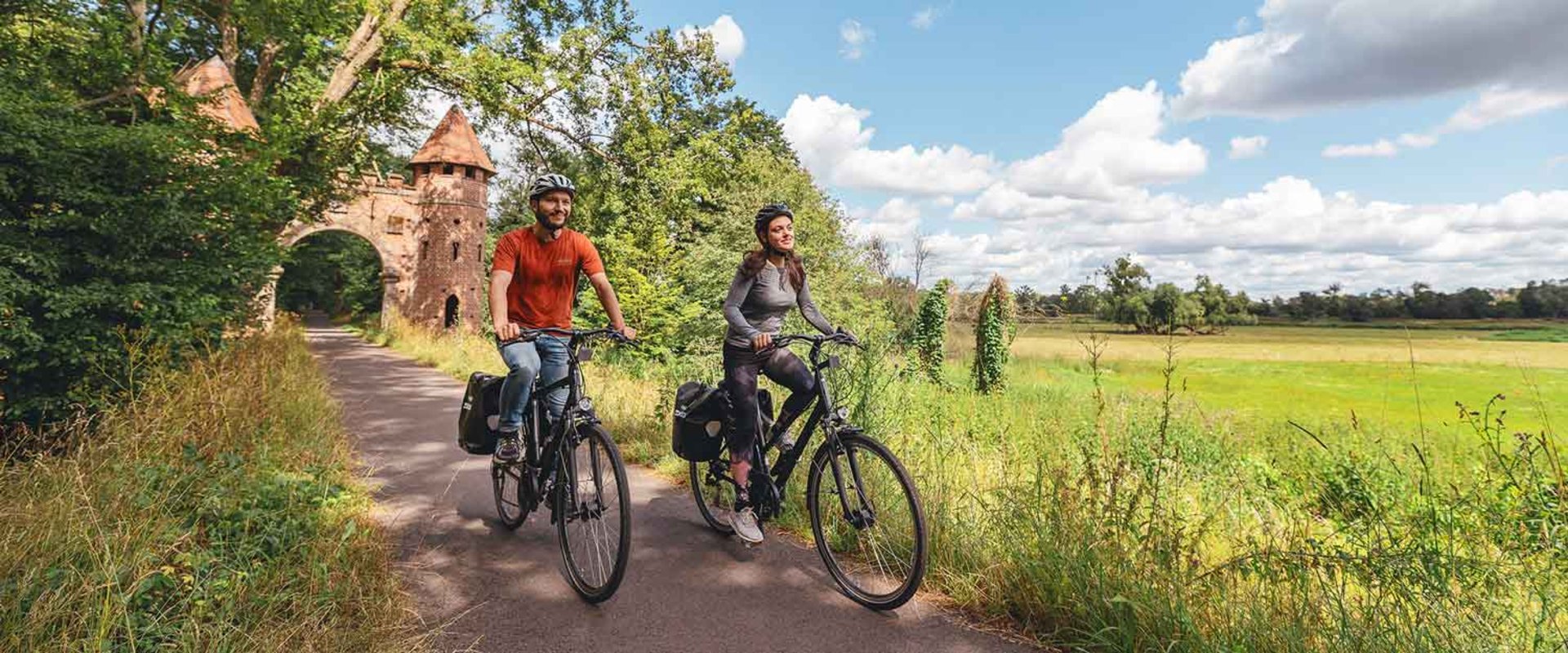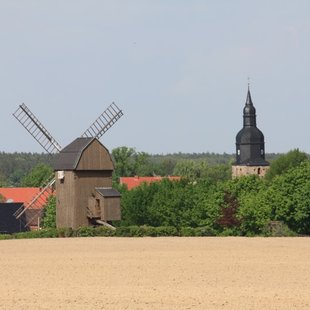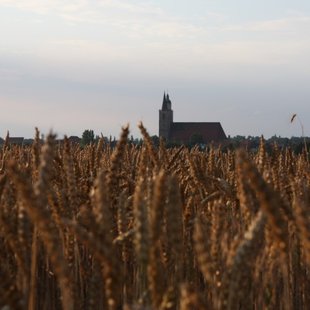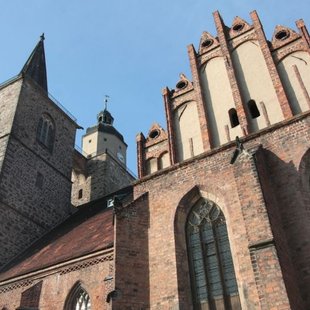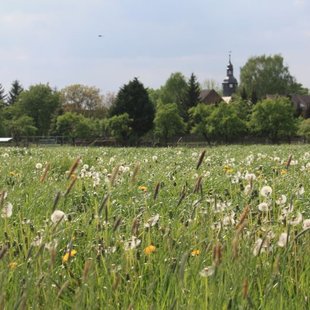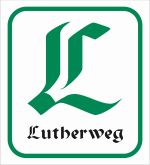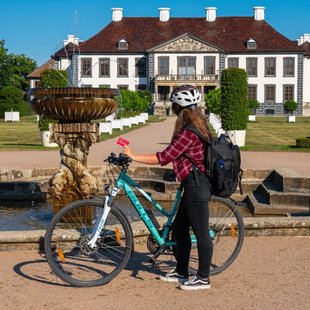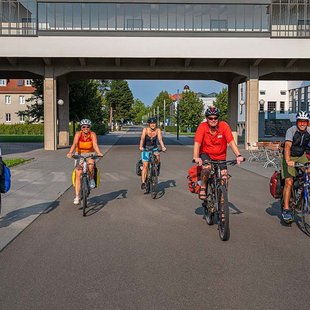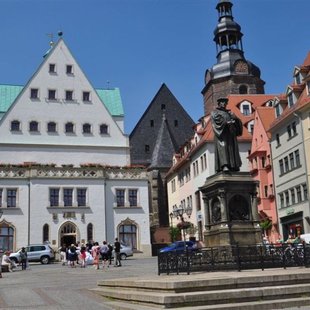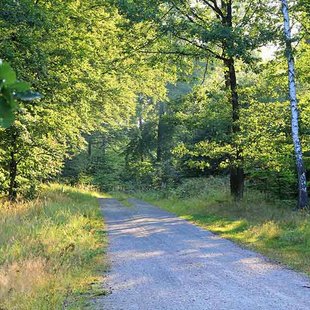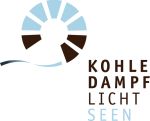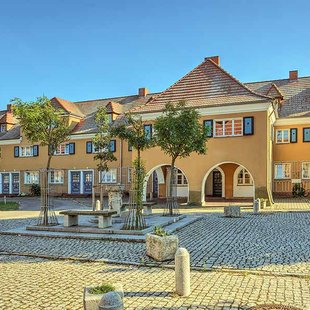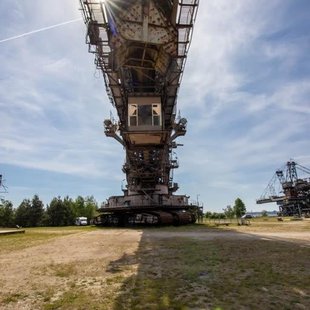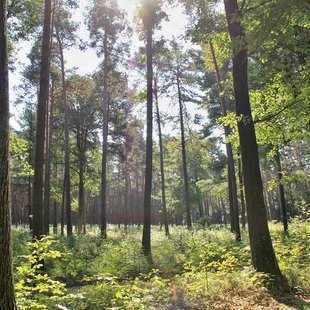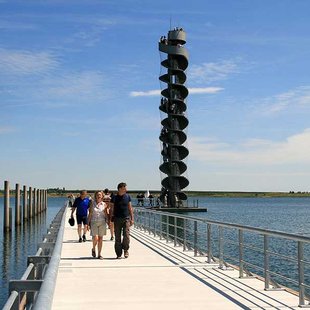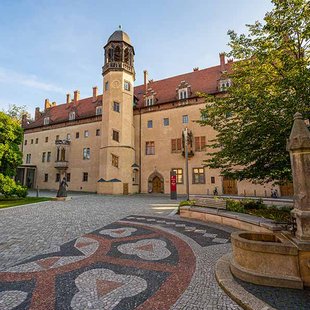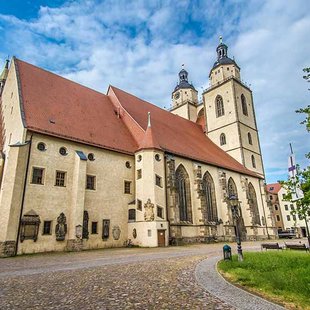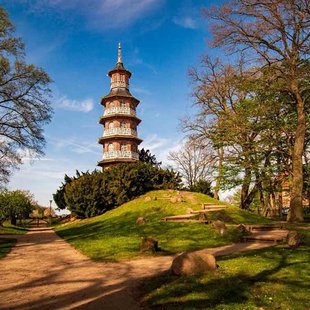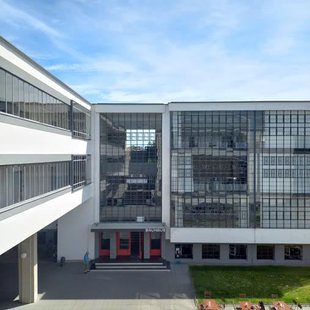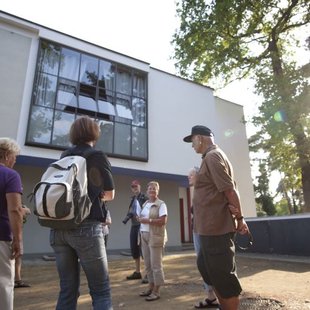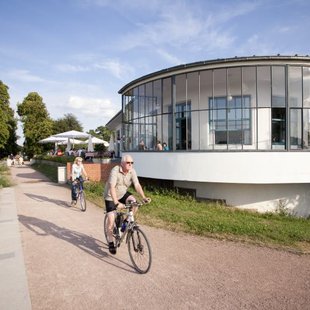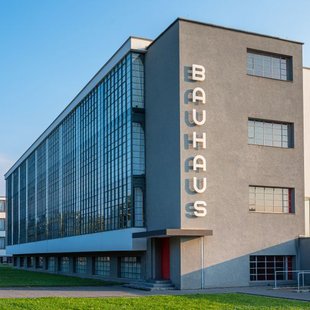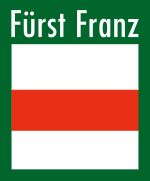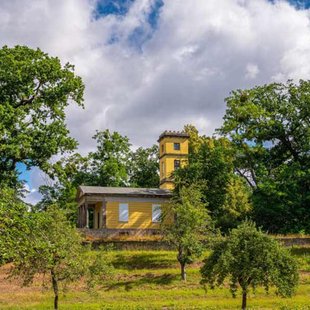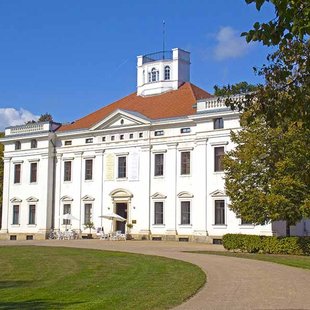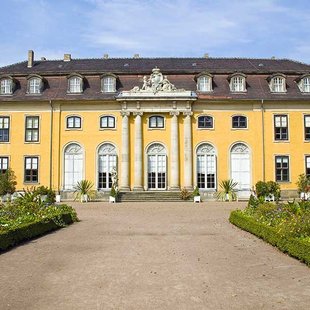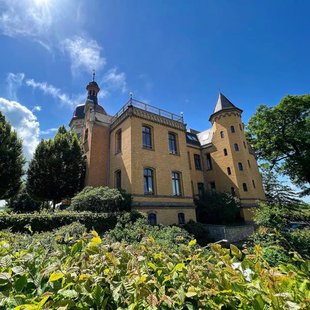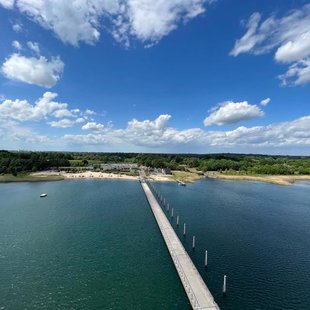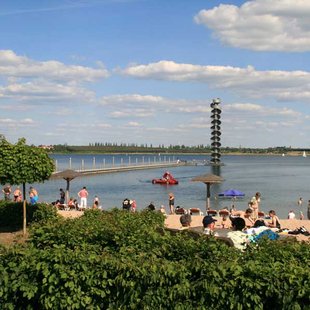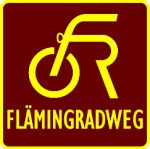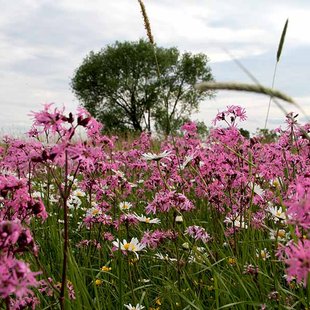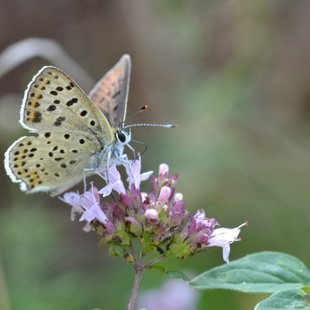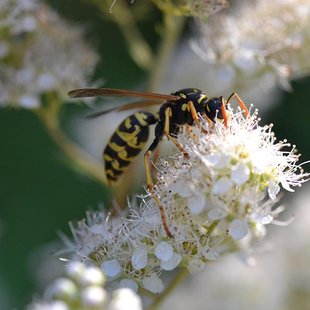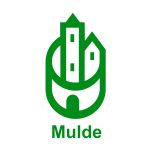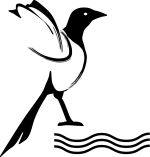Luther-Tetzel-Weg
The Luther-Tetzel-Weg is a 40 km pilgrimage trail that is easy to complete by bike or on foot. By bike, the tour can be covered in one day, with still time to visit the individual stations at leisure. Starting in Lutherstadt Wittenberg, the tour takes you in small stages to Jüterbog, where Johann Tetzel sold his indulgences to the inhabitants of the region, in keeping with the conventions of his time. The sights of the stops are mainly village churches, where exhibitions remind of the time just before the Reformation. Along the way you will get information about the culture, everyday life in those times, as well as about the namesakes of the bike trail, Martin Luther and Johann Tetzel.
Luther Trail
The Luther Trail was created as a cooperation of churches, tourism associations, municipalities and other sponsors and connects trails in Bavaria, Saxony, Saxony-Anhalt and Thuringia under the theme of the Reformation and the life of Martin Luther. In Saxony-Anhalt, the Luther Trail therefore naturally also leads through Lutherstadt Wittenberg, and from here you cycle on via Eisleben to Mansfeld-Lutherstadt. Two different bicycle routes lead to the destination. One route runs from Wittenberg first to the west and crosses Wörlitz with the beautiful Wörlitz parks, Dessau as well as Bernburg on the Saale and meets the second route in Höhnstedt. The second route first heads south through the unique landscape of the Dübener Heide Nature Park, the spa town of Bad Düben, Halle an der Saale and Lutherstadt Eisleben. Along the 410 km long path, the influence that Martin Luther and the Reformation had on the respective town is examined in more detail at the various stops. In addition, some of the stage destinations also have thematic focuses that provide bike hikers with information about the Reformation or aspects of Luther's life.
KOHLE | DAMPF | LICHT | SEEN - Cycling path
Over 120 kilometers, the KOHLE | DAMPF | LICHT | SEEN - Cycling path leads along well-signposted paths through the industrial history of Central Germany. The tour starts in Wittenberg, where the Piesteritz Works Estate is a reminder of the great days of industry in the Wittenberg region. By the time you reach your destination, the Lippendorf power plant in Böhlen, you will have experienced the history of one of the greatest structural changes in the German economy. The history of open pit mining and industry in the region is illustrated at 23 stations. Among them are five post-mining lakes that were created from flooded former opencast mines and are now growing into a thriving landscape. The route also passes FERROPOLIS, the city of iron, where you can experience impressive large-scale open pit mining equipment up close. The route then continues through the unique landscape of the Dübener Heide and other works settlements. Guided tours are also available on various sections, where you can learn more about the history of industry in the region. By the way, the route is also suitable for children, because along the way there are playgrounds, nature trails, water sports and much more, which will also interest the little cyclists.
UNESCO World Heritage Tour
The UNESCO sites in the region between Wittenberg and Dessau have joined forces under the association Luther-Bauhaus-Gartenreich. You can explore these sites by bike within a day or divided over, for example, a weekend.
Start, for example, in the old town of Lutherstadt Wittenberg, where four UNESCO World Heritage Sites stretch out over about 1.5 km. You start with the Luther House and explore the former home of Martin Luther. The tour continues with the Melanchthon House and the St. Mary's Church. The final stop in Wittenberg is the Castle Church with the famous Thesis Door. From the old town, you will ride along the Elbe cycle path over the Elbe bridge and along the Elbe meadows to Wörlitz. There you can stroll through Wörlitz Park and, for example, rest your legs on a gondola ride on Lake Wörlitz.
From Wörlitz Park, you will drive to Oranienbaum, where another impressive park and associated castle await you, built in honor of former Princess Henriette Catharina of Orange-Nassau.
On the way to the last stop of the tour in Dessau, you will pass through the Middle Elbe Biosphere Reserve, which is particularly impressive with its natural river landscape. The UNESCO tour ends in the city of Dessau. For all fans of modern architecture, a visit to the Bauhaus and the Masters' Houses is an absolute must. A little tip: With the World HeritageCard, you can get many discounts at the World Heritage sites along the route, among others.
Bauhaus-Tour
The Bauhaus tour through Dessau was developed for all friends of Bauhaus architecture. The approx. 17. km long round tour takes you past the architectural monuments preserved from the Bauhaus period, such as the UNESCO World Heritage Sites Bauhaus and Master Houses or the Gropius Settlement Dessau-Törten.
The starting point for the bike tour is Dessau's main train station in the north of the city. From there you ride to the Bauhaus building, which was built in 1925/26 by the architect Walter Gropius. Not far from the Bauhaus building you can also find the master houses, where the teachers of the Bauhaus lived at that time. From there, the tour continues to the north of the city, to the Kornhaus, designed by Carl Flieger. This glass circular building is an excursion restaurant that offers a magnificent view of the Elbe River. From the Kornhaus, the route goes to the south of the city of Dessau. There, the route leads through the Bauhaus settlement of Dessau-Törten with the Konsum building, which houses the settlement's information center. The way back of the round tour leads you past the former labor office, which impresses with its round facade and is used today by the Dessau city administration.
The Bauhaus tour leads mainly along separate bike paths.
Garden Kingdom Tour Fürst Franz
The Garden Kingdom Tour, named after the creator of the Dessau-Wörlitz Garden Kingdom, Prince Leopold III Friedrich Franz of Anhalt-Dessau, is about 68 km long in total. The route leads through the unique Elbe meadow landscape of the Middle Elbe Biosphere Reserve and connects numerous sights with the palaces and parks in the UNESCO World Heritage Garden Kingdom of Dessau-Wörlitz.
The tour starts in Großkühnau, north of Dessau, and leads through the Großkühnau Landscape Park past the Weinbergschlösschen in Kühnauer Park to Georgium Park and Palace.
The route continues along the Elbe Cycle Path to the Jagdbrücke bridge over the Mulde River. First, it is worth taking a detour to Luisium Palace and Park before continuing through Sieglitz Park and the Elbe meadows to Wörlitz Park.
The last section leads via Oranienbaum further on the Europaradweg R1 to the beaver free area and the "Auenhaus" in the biosphere reserve Mittelelbe, through the Mulde floodplains and Mosigkauer Heide to the castle and park Mosigkau.
Goitzschesee circular route
This 30.3 km long circular trail provides an overview of the structural changes that the Goitzsche has undergone in recent decades. The transformation of the former industrial landscape into today's cultural landscape has made the Goitzsche the largest landscape art object in the world in terms of area.
The tour starts at the Bitterfeld city harbor and leads first south through the natural Goitzsche forest. Passing the "Sandbank" and the lido you reach the monument "Opfer Niemegk". You can enjoy a beautiful view from the Sonnenblick as well as from the Feldherrenhügel and the Roter Turm in the village of Pouch.
Further along the shore you come to the peninsula Pouch and here to the pier, which leads to the Pegelturm. The last, very busy section of the shore leads past the Villa Bernsteinsee back to the starting point.
Fläming Cycle Path
The Flämingradweg is the perfect bike path to explore the beauty of the High Fläming as well as the foothills of the Fläming. It is the connection from the R1 long-distance cycle route in Bad Belzig to the Elbe cycle route. In Garitz the route splits: either you continue towards Zerbst/Anhalt to Walternienburg or to Dessau-Roßlau to the cradle of the Bauhaus.
The Flämingradweg runs almost exclusively on existing roads and rural paths. It is an invitation from the supra-regional cycle paths to immerse yourself in the Fläming and explore the special features of the nature park. The landscape is characterized by erratic blocks, castles and mills. Numerous village churches as well as Flemish fieldstone churches invite you to visit.
Mulderadweg
For a tour through the countryside of eastern Germany, the Mulderadweg is a great choice. The bike path can be ridden on two routes, one branch of which winds along the Freiberg Mulde River and the second along the Zwickau Mulde River. At Colditz the rivers join to form the United Mulde and the cycle paths also come together here. Cyclists then continue along a common path on the Mulderadweg to Dessau, where the united Mulde flows into the Elbe.
On the route along the Freiberg Mulde you start in Freiberg, Saxony's oldest and most important mining town. Along the route, small towns, castles and monasteries keep popping up in the wonderful landscape, inviting you to visit them. Along the Zwickauer Mulde river, cyclists pass through pleasant towns and cities that are closely linked to the cultural history of Saxony. Historic town centers, majestic castles and palaces, and museums alternate along the route. From Colditz, all the cyclists will continue together towards the north and Saxony-Anhalt. After leaving the towns of Grimma and Wurzen behind you, you will soon reach the Dübener Heide with its unique natural spectacle. You will pass monasteries and castles, riparian forests and former open-cast mining areas. In Dessau, either culture and architecture or the connection to the Elbe cycle path awaits you. In total, the Muldentalradweg leads over 100 km on forest, bike and forest paths and only partly on lightly to moderately traveled country roads.
Schwarze-Elster-Radweg
Not far from Lutherstadt Wittenberg, the Schwarze Elster flows into the Elbe. Along the river, cyclists can take a relaxing bike ride on the Schwarze Elster bike path. Over 190 km it goes along the course of the river from Elstra in the Lusatian Mountains to the mouth of the Elbe in Elster. The route runs continuously along paths specially designed for cyclists from the Lusatian Lakeland to the Elbe. Along the way, the cycle path passes through typical Lusatian towns and communities, for example Senftenberg, the garden city of Marga, Bad Liebenwerda or Herzberg. The cozy town centers are characterized by stone and half-timbered buildings steeped in history, and along the way there are also castles, churches and mills that are worth a detour. These include the fortress and castle of Senftenberg, whose military architecture is particularly striking, or the baroque castle in Elsterwerda. A short excursion off the bike path is particularly worthwhile in the Little Spree Forest in Wahrenbrück, where resident ferrymen paddle visitors through the rivers on a barge. At the mouth of the Elbe, you can then connect to the supra-regional Elbe Cycle Path.
If you would like to explore one of the listed bike paths, you are welcome to contact us at the tourist information office at the castle church. We will be happy to lend you bikes and e-bikes during opening hours.
Cost:
Bicycle 11,00 € per day
E-bike 25,00 € per day
Of course, there is also the possibility to participate in guided bike tours in Lutherstadt Wittenberg. Have a look at our city tours for active people!

